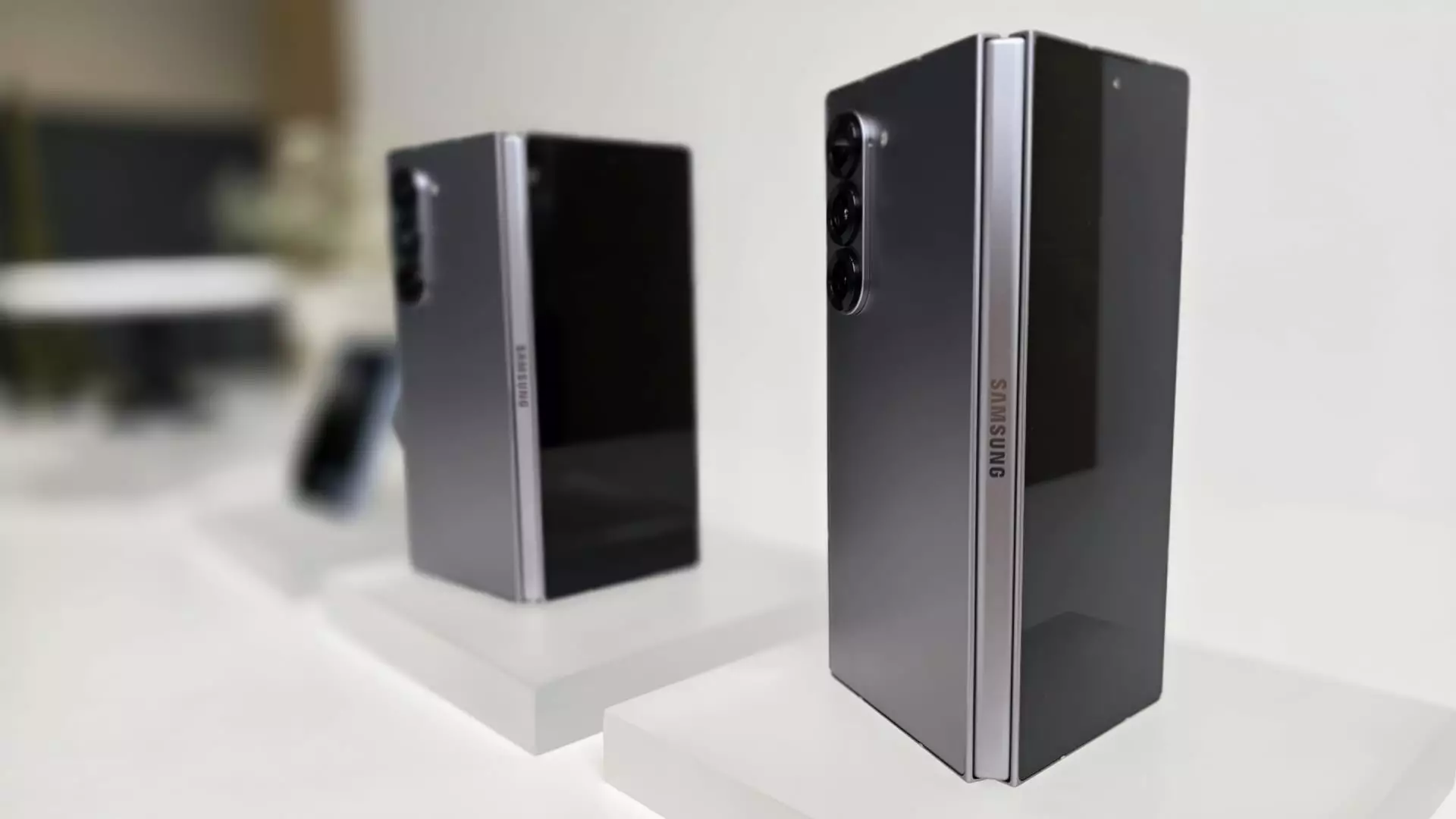In the dynamic world of smartphones, the foldable category is rumored to witness a groundbreaking advancement as Samsung prepares to introduce a sleeker version of its Galaxy Z series. Scheduled for launch next month, the anticipation surrounding this unveiling underscores the fierce competition in the tech industry, particularly among Chinese manufacturers like Honor and Oppo. These companies have made notable strides in releasing foldable devices that prioritize slimness and lightness, thereby pushing Samsung to innovate relentlessly. The advent of foldable phones has revolutionized the user experience, shifting the paradigm from traditional monoblock devices to more versatile options that cater to multitasking and portability.
Why Thinness Matters
The race toward thinner foldable devices has captivated the attention of both consumers and analysts. According to Ben Wood, chief analyst at CCS Insight, the thickness of foldable phones is more crucial now than ever. The modern consumer is unwilling to compromise on the dimensions of their devices; they seek the expansive real estate that foldables provide without the burden of a bulky form factor. This changing expectation highlights a significant trend in consumer preferences: the desire for enhanced functionality without compromising on the comfort and style that sleeker designs offer.
Samsung’s previous flagship, the Galaxy Z Fold6, weighed 239 grams and measured a thickness of 12.1 millimeters when folded. In stark contrast, competitors like Oppo’s Find N5 and Honor’s Magic V3 have already carved out a reputation for their impressive designs—8.93 millimeters and 9.2 millimeters thick, respectively. These advancements indicate a clear call to action for Samsung to refine its offerings. The upcoming launch is an opportunity for Samsung to reaffirm its dominance in the foldable market. “Samsung needs to step up,” Wood asserts, emphasizing the need for robust innovation to keep pace with competitors.
The Speed of Competition
Despite the growing trends in the foldable smartphone niche, Samsung faces immense pressure from the rivalry that is brewing in the Chinese market. Honor and Oppo both plan to showcase their latest innovations, with Honor set to launch the Magic V5 on July 2. Their aggressive marketing strategies and commitment to emphasizing thinness and portability allow them to differentiate from Samsung, which, while established, must not underestimate the breeding ground of new ideas emerging from these rivals. The commitment to dialing down thickness without sacrificing internal specifications raises the stakes, and the stakes are high—only brands that innovate will thrive.
Consumer Perception and Market Challenges
However, thinness alone is not a panacea for the sluggish foldable market. CCS Insight predicts that foldable devices will constitute a mere 2% of the smartphone market this year. This statistic reveals a glaring discrepancy between innovation and consumer enthusiasm. It prompts an important consideration: to spur growth, manufacturers need to not only meet aesthetic expectations but also articulate the clear benefits of owning a foldable device. The key lies in addressing consumers’ critical mindset on practicality—how do these devices fit into their daily lives?
There’s potential for ultra-slim foldables to rekindle interest among consumers by mimicking aspects of traditional smartphones combined with the benefits of folding technology. Yet, the reluctance persists; many consumers struggle to see the value in foldable phones, which challenges manufacturers to provide more compelling reasons to switch. As a critical market player, Apple’s rumored entry into foldables in the coming years adds another layer of intrigue. The tech giant’s reputation for delivering user-friendly products means any forward leap in foldables could redefine the landscape significantly.
Future Outlook: Bridging Innovation and Adoption
The challenge for Samsung and its competitors will be more than just creating beautiful devices that are light and thin; they will need to fundamentally change the narrative surrounding foldable technology. As the market evolves, it will become increasingly vital to communicate the practical applications of foldable smartphones alongside their design. Only by bridging innovation and genuine consumer demand will manufacturers secure their positions in this burgeoning but currently underwhelming segment. As the market pivots, only those who can intertwine advanced technology with an appeal to the everyday consumer will yield successful dividends in the future.

